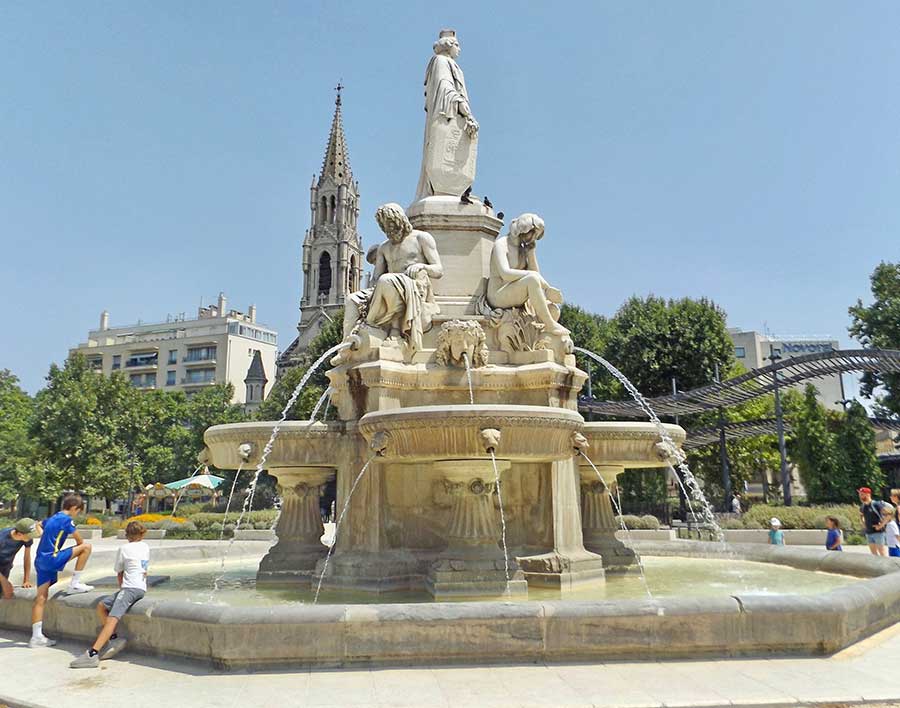I am on my way to the Musée de la Romanité, which I assume will be all about the Roman history of Nîmes. I am to be proven very wrong.
En route I pass the Pradier Fountain, only a few hundred years old. Carved in white marble in 1845 by James Pradier, it represents Nîmes itself, which came into being because of its water, with the four figures below standing for the four main water sources of Nîmes.
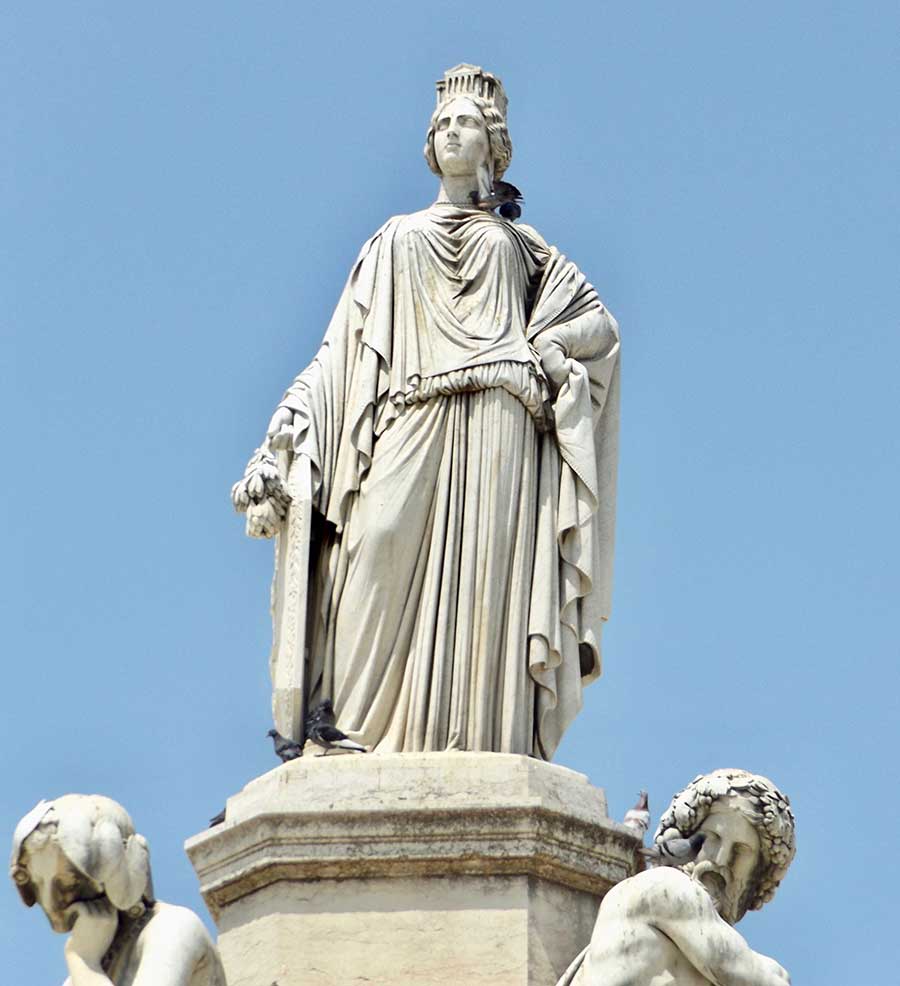
I am most interested in the lady atop. It is said that the sculptor’s mistress posed for this, but whoever she was, that is one sassy lady. Just look at her pose, unsmiling, hand on hip, with such upstanding breasts that they must surely have had help.
Her draperies are exquisitely rendered, and maybe the ‘so what’ stance is to counter the odd head-dress he has given her, a mini Maison Carrée, the town’s famous Roman temple.
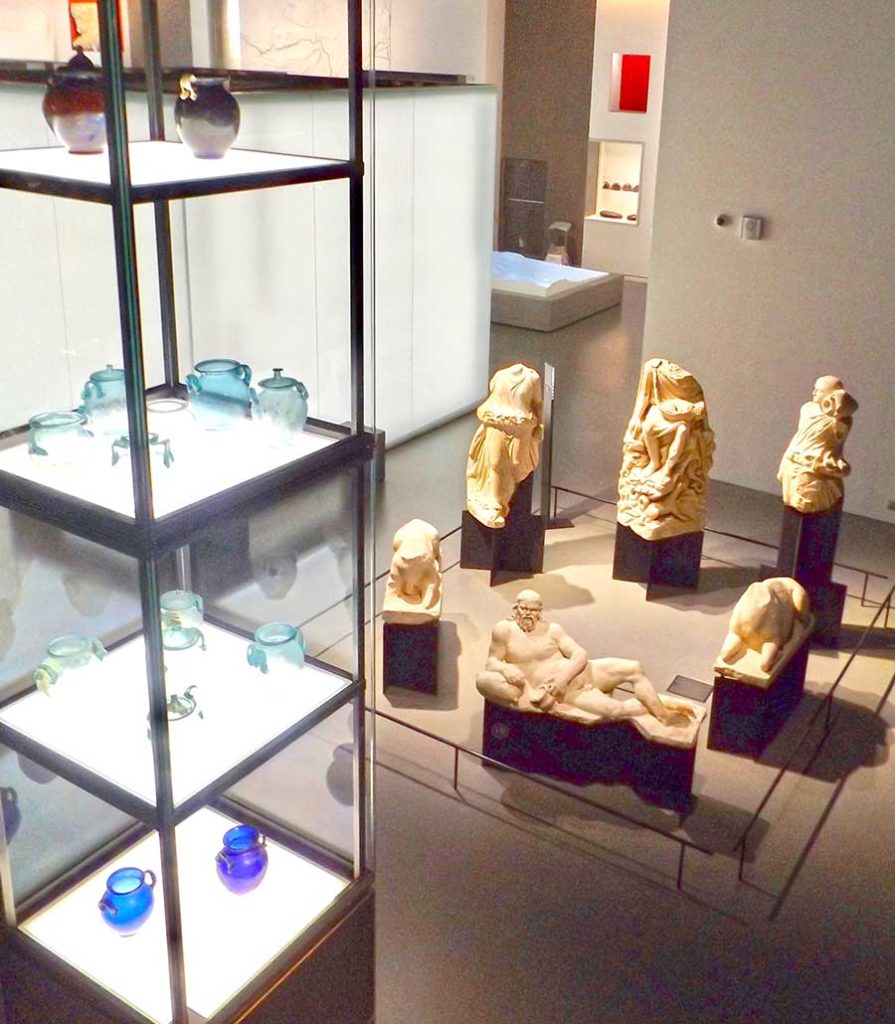
The Museum was eye-opening. Impressively Roman, as above… yes.
But I had no idea that so much history could be seen from the Pre-Roman era (800-100BC), when Gaulish people settled and thrived around the original spring, sacred to the god Nemoz, which became Nemausus under the Romans… and eventually gave the name of the Nîmes.
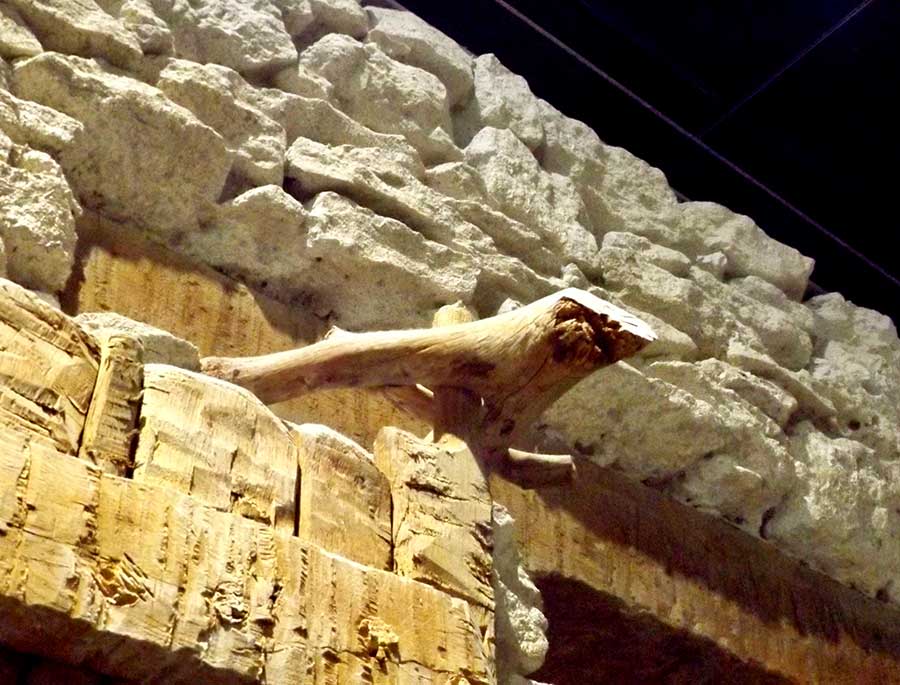

While the Roman era (27 BC – 400 AD) had the most appealing relics, this recreated hut from earlier times caught my eye with its ingenious door hinge, top and bottom dependent on nature for shape and strength.
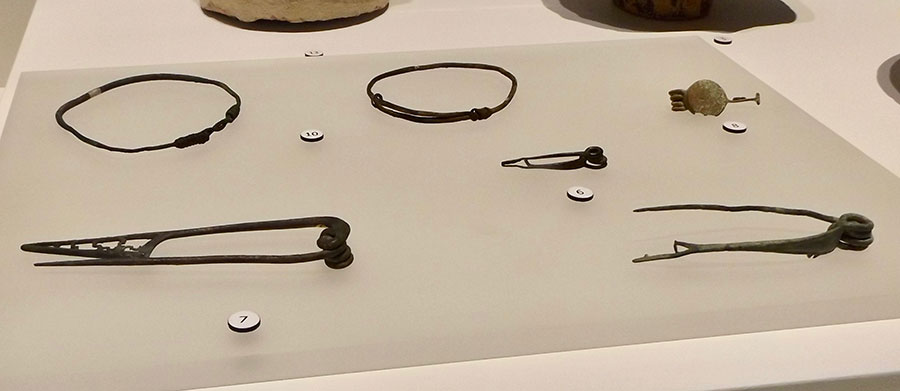
I found myself wondering what the heck we had achieved …apart from wrecking our one world … when maybe 2000 years ago the Romans were making such fine metal items as safety pins! Yes, the glassware, the sculpture, the buildings, the infrastructures, were all admirable and incredibly lasting, despite the ‘progress’ of the centuries, but somehow those safety pins remain my symbol of ‘the French Rome’.
After the Romans came the Medieval era of Nîmes (1000-1500), the relics of which … to me …seemed less cultured and creative than those which came before.
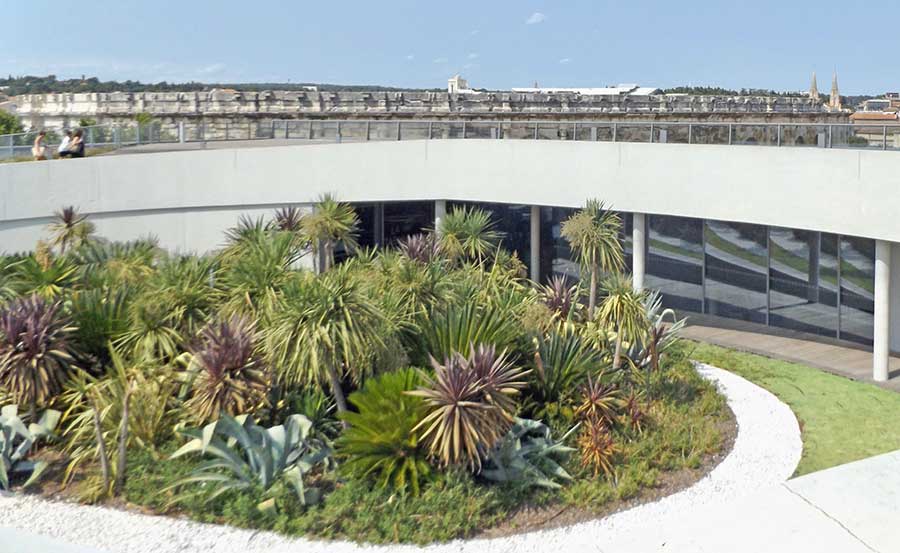
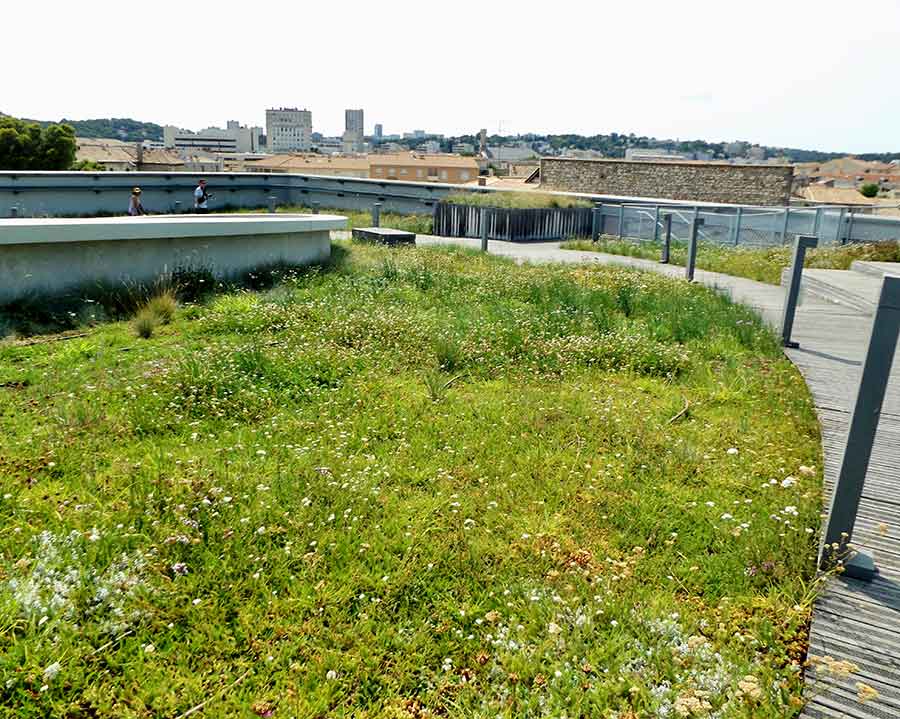
This very modern building includes a roof garden, where I am impressed by the Mediterranean plantings, looking natural and coping as nature meant.
It is a fascinating museum, which took me back before the Romans and made me see their visible heritage here more clearly in its place in history.
